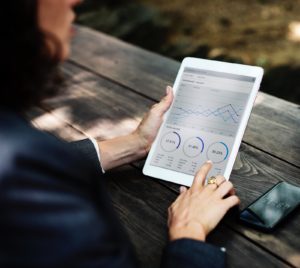Creating and sending email newsletters is great for business. In fact, email drives 174% more conversions than social media and the ROI is incredible, for every $1 spent the return is $44.
But the creating and managing an email marketing strategy can sometimes be overwhelming for marketers. Since email marketing is such an effective way to keep in touch with customers, you can’t just throw a couple of things in a template and hope for the best.
Most newsletters contain informative articles or blog posts that help the reader stay connected to the company or organization. Sending newsletters can help drive conversions, however you want to define them for your business. It’s definitely worth spending a little time getting better at creating email newsletters.
The numbers are there, you know your customers want emails, and fortunately, we’ve got some pointers to help you stop groaning and start grinning when you send out your next newsletter.
Start with the basics
You’re probably already sending out some emails and know a little bit about what needs to be done, but let’s cover a few of the basics that have to be spot-on to work in your emails.
The more interested your email subscribers are in what you send to them, the more engaged they are with your business, the more likely they are to convert.
So while you may have some experience with creating emails, take a look below and make sure you’ve got your basics down.
1. Nailing down the Subject line and From label
These are two of the most important pieces of an email newsletter. If your subscriber doesn’t know who sent the email or why they should open it, you’re dead in the water. They’ll never read your articles, never connect with your business and never become a customer. If you’re using an email service provider to create and send your emails they’ll have a spot for you to fill in this information.
- The From label should be your company name. Getting tricky or funny here can just confuse your readers and possibly cause delivery problems. If your name is your business, i.e. a realtor or doctor, then use your name. You want your subscribers to know right away who sent the email so they can know to open it.
- Subject lines need to be eye-catching. You can have some fun with the subject line, but it must have something to do with the content, you can’t trick people into opening an email. That’s part of most spam laws around the world so keep that in mind as you’re writing. It needs to be fun, attention-grabbing and short.
2. Staying on brand
Once you get someone to open your email with your amazing subject line, they need to know it’s the right one for you. Have your logo near the top and be sure you’re using any colors or fonts that you use for your business. If you’re using a template for your email, most email service providers have templates you can and should use, match the colors to your website or blog. As soon as your email is opened someone should know it’s all about your company. It’s also important to keep the same tone in your writing as you would use on your website or blog,
3. Using high-quality images
Images do an awesome job of breaking up large chunks of text. They’re eye-catching and really good for helping your subscribers visualize a product, service, or event. When adding images to your emails, make sure you use high-quality images– nothing blurry or pixelated.
4. Creating a Call-to-Action (CTA)
No matter what sort of email you’re sending or what kind of business you have, you want your email subscribers to do something when they open your email. Your call-to-action is trying to get them to do whatever this action is. Before you even start creating an email, figure out what you need your subscriber to do when they read it, and then create your CTA. If you need someone to click a button to download a guide, sign up for an event, or make a purchase, keep that in mind as you write your email.
Here are some CTAs that can be effective:
- Sign up today!
- Curious? Read On!
- Book Your Tickets
- Start Your Free Trial
- Start Today
- Order Now
The Drake Hotel uses on-brand colors and logo, good images and an easy to see CTA in their newsletter.

By following some simple, basic rules you’ll have a neat and orderly email that’s easy to read and find important information in. Your readers will look forward it and want to open and read it. And the more they do that, more chances you have to convert them. Now let’s get to some juicy details that can push your email conversions over the top.
Email content
The information you include in your email is what will make your readers want to open your emails and take an action, all leading to a conversion. Take some time to think about what you need your readers to know and what they’ll find interesting. Your email newsletter needs to be of value to them, not just what you need. Make sure what you’re including seems like a benefit to them and you’re not just asking for something.
5. Send relevant content based on subscribers’ interests
Sending information that your email subscribers are interested in is the key to successful marketing. How do you know what they want though? There are a few ways to understand the needs of the people reading your emails. The easiest way is to collect information at sign up that you can use later for your email marketing. Ask for things like:
- Geographic location – you’ll know if it’s summer or winter where they are in the world, if there’s a big storm, and what their time zone is. All things that can help you craft content that means something to your reader.
- Hobbies – chances are the people who are most interested in your business will have some interests in common, so knowing what those are can help make your email more important to them.
- Age and birthdate – You can send birthday greetings knowing the birth month of your readers. But you can really create emails that have your subscribers in mind if you know their age.
- Purchase behavior – if you know someone has made a purchase or downloaded a guide, you’ll know a bit more about what they find valuable in your business, so keep track.
You can also use the data from your email marketing to help you understand more about your email subscribers. Take a look at what links are clicked and what part of the email those links are in. You’ll see which articles get clicked on more and how far your readers get in your email. This should help you know what to put in emails in the future, and what to leave out.
Adidas uses data they have about their subscribers to send emails based on gender.

6. Use personalization to build relationships
One of the best ways your email can help get conversions is to use personalization. This can be as simple as using your readers’ name in the subject line all the way to specific images for specific people. The more you know about the people reading your emails, the more you can use personalization to your advantage.
Once again, the data you collect from your sign-up forms can be used for personalization. All email sign-up forms ask for an email address of course, but first and last name can go a long way to make emails feel more inviting. After you get the hang of using first names in your emails you can break up your content based on things like where people live, if they’re new to your newsletter, or if they’ve made a purchase before. Knowing where they live can even mean that you send your email to arrive at 10 am in each time zone.
Personalization gives you the opportunity to send your reader an email just for them and increases the chances that they’ll click through. And you’ll need to create fewer emails, giving you more time for other tasks. Most email service providers have tools that allow all of this to be done very easily.
TripAdvisor uses a first name and loyalty program information to encourage more interaction with their emails and business.

7. Segmentation
One more thing that data can do for your newsletter is to help you create lists that ensure you send the right email to the right people. Once again, you can make lists based on where someone lives, where they are in your conversion cycle, if they’re interested in a certain product or if they’ve downloaded a guide. By having specific lists for specific groups of people, you can target your email newsletter content to meet their needs. Again, most ESPs will have tools that make it easy to make lists based on anything you like.
Wrap up
Creating emails that drive conversions shouldn’t be a frustrating endeavor, all you need is a little information about your subscribers and some easy-to-use tools. Keep in mind that there are people at the other end of your email and craft a message that is important to them. Make all your emails easy to read and full of vital information and you’ll have more conversions in your future.
For more ideas on creating great emails, check out the infographic Anatomy of a Winning Email Design.
–
 Andrea Robbins is a Content Marketing Manager at Campaign Monitor. She loves a good cup of coffee and spending time outdoors. Keep up with her on Twitter @andirobz
Andrea Robbins is a Content Marketing Manager at Campaign Monitor. She loves a good cup of coffee and spending time outdoors. Keep up with her on Twitter @andirobz






Nouman
10 Aug 2018I’m trying hard to get conversion from email newsletter unfortunately,getting no conversion from my list.I think main problem was my strategy.still learning new tricks.from your post I have found great tips.I will apply your strategy asap! thanks a lot